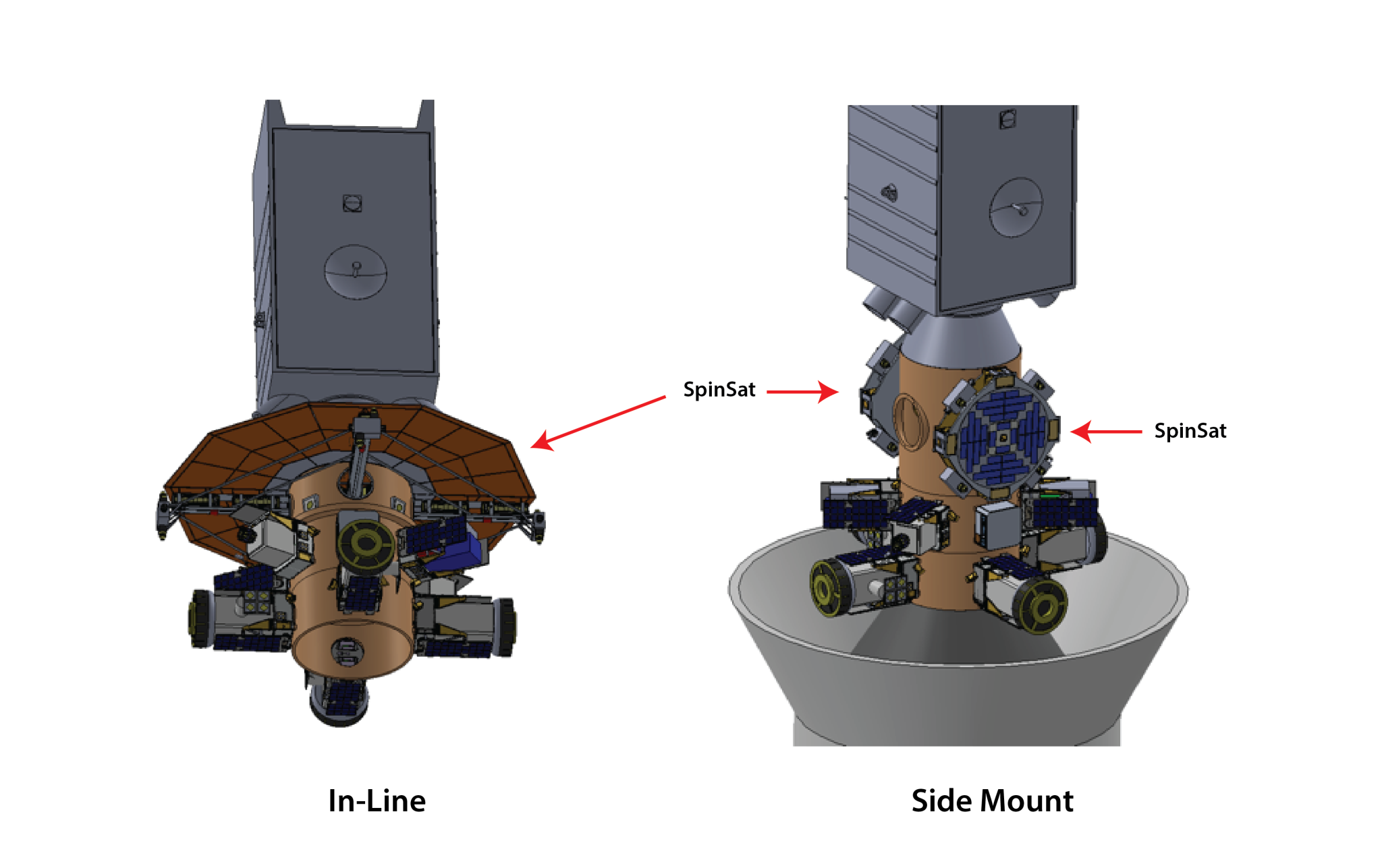| Meet the Team |
|---|
- Science Lead: Jessica Lee – jessica.a.lee@nasa.gov
- Project Management: Scott Richey – scott.richey@nasa.gov
- Payload Technology: Tony Ricco – antonio.j.ricco@nasa.gov
- Programmatics: Jay Bookbinder – jay.bookbinder@nasa.gov
- Systems Engineering Lead: Stevan Spremo – stevan.m.spremo@nasa.gov
| Problem Statements |
|---|
Human Health and Environmental Control & Life Support System (ECLSS):
- The health effects of long-duration exposure to deep-space radiation and reduced gravity are poorly understood, as are effects on microbes and microbiomes relevant to food production and life support. Beyond-LEO experimentation is needed to understand, manage, and mitigate effects on health, performance, and critical support systems.
Fundamental Space Biology:
- SMD/Biological & Physical Sciences and PSD/Astrobiology need access to combined deep-space radiation and relevant gravity ranges to study space processes and measure effects on organisms and biomes.
Deep Space Technology Development
- ESDMD and STMD need frequent access to platforms providing relevant environments for efficient testing and development of deep-space technologies.
| Goals and Objectives |
|---|
Goals: Develop beyond-LEO (BLEO) multi-payload platform to provide transit-to-Mars and Mars-surface gravity-plus-radiation environments for science experiments, model validation, technology development, & risk reduction.
Objectives:
| O1 | Simultaneous long duration exposure to deep space radiation environment over a range of (0 -> 1G) gravities simultaneously |
| O2 | Low cost per experiment as many experiments can be hosted on the platform which will provide enhanced statistical significance |
| O3 | Allow for frequent access to space as SpinSat can be launched on most launch vehicles into almost any orbit |
| O4 | Interfaces consist of the highly familiar “Cubesat” interfaces based on the “U” format which allows the PI to focus on the experiment, not the S/C |
| O5 | Easy integration / payload access |
| O6 | Addition of regolith simulant allows for simulation of lunar and possibly Martian radiation environments |
SpinSat Addresses PI Needs
- A highly cost-effective “standardized” secondary-compatible Class D “Plug-n-Play” platform
- Utilizes standard “open source” U-form factors for experiments
- Allows PI to focus on the experiments and not the spacecraft
- Offers increased flight opportunities for experiments needing the combined microgravity effects from near-0 to 1-g simultaneously, deep space or lunar radiation environments
| SpinSat Configurations |
|---|
SpinSat provides alternate “gravity fields” and payload configurations.
There are two mechanical configurations for SpinSat, Side Mount and In-Line.
Side Mount – Designed to be accommodated on an ESPA Grande stretch ring port.
- 1.5m, 330kg spacecraft, 36 rpm
- 32-48U, configuration dependent
In-Line – Designed to be part of the ESPA ring stack.
- 4.3m, 1225kg spacecraft, 21 rpm
- 96U+ of payload
- Requires separator bands between other rings in the stack
Launch Vehicle Accommodation is Easy
SpinSat can be:
- Launched on a variety of launch vehicles
- Into almost any orbit
- Mounted as an ESPA-port secondary payload
- Provide at least 48 ‘U’ worth of experiments
- Multiple SpinSats on multiple ports
- Cost effective



























